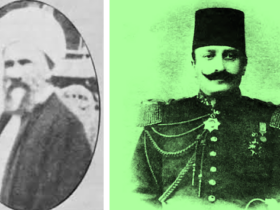By Ali Rıza Taşdelen
This article presents the sociological and class structure of the voters of the National Rally party (Rassemblement National – RN).
The Ipsos polling institute conducted a survey with France Télévision, Radio France, France 24/RFI and Public Sénat on June 6-7, with a sample of 8,923 people registered in the electoral rolls representing the French population aged 18 and over. The results of the survey were announced on the evening of June 9 just after the European Parliament elections.
Except Paris and bourgeoisie
Geographically, Jordan Bardella, the candidate of the RN, is the leading candidate in all electoral regions except Paris. Also, he received the most votes from all social and class groups except the bourgeois class.
Bardella’s list performed much better this time among voters under 25 compared to that of 2019, with an increase from 15% to 26%. Similarly, its share of female votes rose to 30% from 20% in 2019. So, the RN gained voters from almost every party’s electorate.
Marine Le Pen’s party received 54% of the blue-collar vote, 40% of the white-collar’s, 36% of the retirees’ and 33% of the votes of unemployed. From those who identified themselves as working class in the survey, 38% preferred Bardella while 14% voted for the Socialist Party candidate and 11% for Jean-Luc Melenchon’s candidate, Manon Aubry. The RN made its biggest leap in the middle class: the Party’s vote rose by 10 points from 19% to 29%.
47% of the participants who describe themselves as “angry, protestor, and dissatisfied” voted for the RN, while 14% preferred Mélenchon’s candidate. Meanwhile, the ecologists, who fell below 10% in all socio-demographic categories in Ipsos’ survey, happened to have lost most in the elections.
The RN, while having broadened and strengthened its voter base across all segments, only failed to rank first in the bourgeoisie. The RN received 19% of the votes of those who described themselves as coming from a “wealthy or privileged background”. To compare, Macron’s candidate Valérie Hayer received 26% from the same group.
In the past, the potential voters of traditional left-wing parties were workers and civil servants, i.e., the poor segments including the unemployed and low-income retirees. Today, most of these segments of society vote for Marine Le Pen’s nationalist party. The voters of the bankrupt Social Democratic Party now prefer the nationalists. In electoral regions that were once strongholds of the French Communist Party, the National Rally is now the leading party.
The priority of nationalist voters is issues of unemployment and livelihood
Contrary to what is believed, the primary concern of voters who vote for RN is not opposition to immigrants. In a poll conducted during the presidential election, the priority for voting for this party was ranked as follows: 1) Unemployment and livelihood issues, 2) Security, 3) Immigrants. The voters of this party, which is highlighted for its xenophobia, also prioritize concerns about unemployment and security over the immigrant issue. So, does this party not have xenophobic and racist factions among its voters? It does.
Of course, a party is defined by its program and practices, as well as the sociological makeup of the people who support it. Despite Marine Le Pen’s significant efforts to save the party from the racist/fascist rhetoric of her father, Jean-Marie Le Pen, and to pull it towards the center, remnants of the old xenophobic rhetoric continue to persist, even if somewhat diminished.

















Leave a Reply